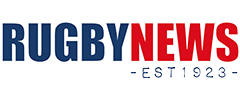
NSW Rugby break-even despite disastrous 2017 season
| Apr 27 2018
NSW Rugby announced a break-even profit and loss position for 2017, despite enduring what can only be described as a disastrous season.
NSW Rugby suffered a 24% decline in membership and ticket sales, a 13% reduction in sponsorship revenue and a 15% decrease in Rugby Australia funding, but still recorded a minor surplus of $14,230.
“Considering the year that we had, I think it’s a really positive result,” NSW Rugby CEO Andrew Hore told Rugby News
“Obviously with the Waratahs poor performance on the field, the removal of the Western Force and the overall sentiment around Super Rugby, I think it was a hell of an effort.
“We also maintained our participation numbers and that was pleasing. Obviously we still face a lot of challenges in our game but I think we’ve created a good base to work from and progress forward.”
At the organisation’s AGM earlier this week, NSW Rugby finalised changes to their governance structure and appointed former Wallabies Marty Roeb




